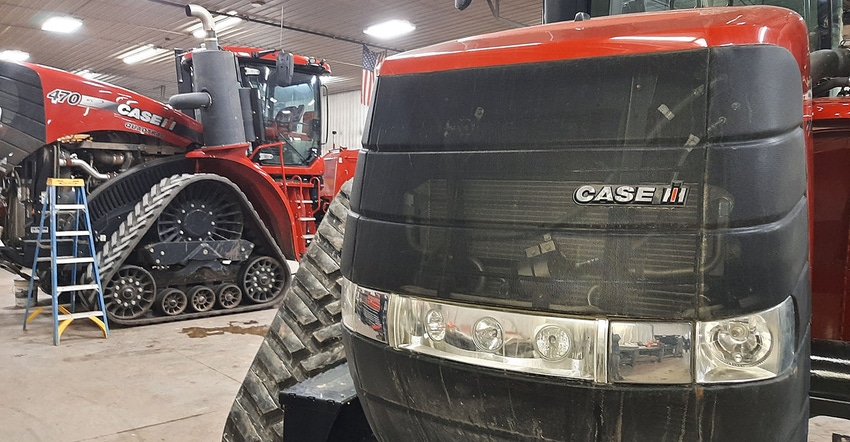February 12, 2021

After several months of searching, in January, dad was able to trade a couple of tractors. There were no ‘great’ deals this time around, but we did come across three or four ‘fair’ offers. In the end dad agreed to two of them, and both ended up being from our local dealer.
Two tractors were traded on separate deals. The first one was a CaseIH Steiger Rowtrac. We moved up only a year, but got the track spacing moved out from 88 in. to 120 in. This now gives us row crop capabilities and more flexibility in case the planting tractor were to breakdown.
We were also able to upgrade to the CVX transmission which should benefit us especially when this tractor is running the tile plow. Under these conditions, you can operate at feet per minute speeds, while having the engine at higher rpms.
Both of these capabilities are big as they allow for more pulling power and hydraulic capacity at low speeds. The powershift tractor we traded had more limitations as you could only idle the tractor and about the slowest you could go was 1.2 mph. You had to be careful the plow had enough hydraulic flow to keep up with grade changes if the terrain was bumpy.
The second tractor traded was the front wheel drive New Holland Tractor we had since 2014. This was the CVT that nobody wanted to drive. (Kind of ironic we’re getting rid of a CVT in one model and getting into a CVT in another! But they are different, so we are told.) For its age, it was a low hour tractor. We’re simply making the move to 2017 powershift. The new one happens to be CaseIH and is also one size larger. It will be easier for our senior employees to operate.
This time around both trades were on used tractors. When we evaluated the trades, we took the difference in options and size. Once that number was calculated we then divided it by the hour difference to determine what the cost per hour was.
Today is the day we pull all the monitors, displays, cabling, etc., out of the old tractor and re-install them into the new tractor. The dealer agreed to do one, I think I will end up doing the other. Hopefully everything goes smoothly this time. Last time, it was a long distance trade. Equipment was pulled out of the old tractor and sat in Rubbermaid crates until the new tractor arrived and I had time to do the install.
It took me way too long to remember where everything went!
The opinions of the author are not necessarily those of Farm Futures or Farm Progress.
About the Author(s)
You May Also Like






